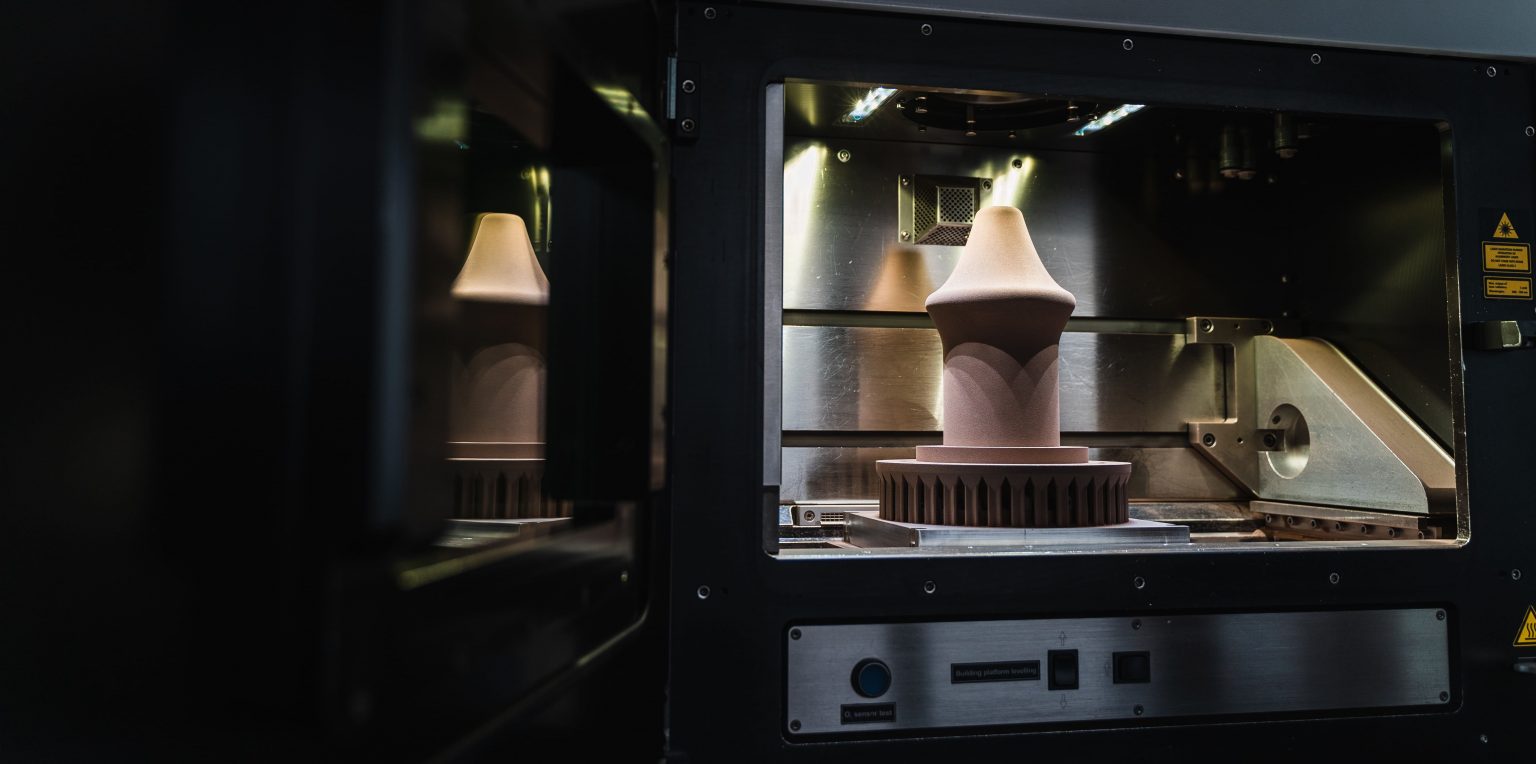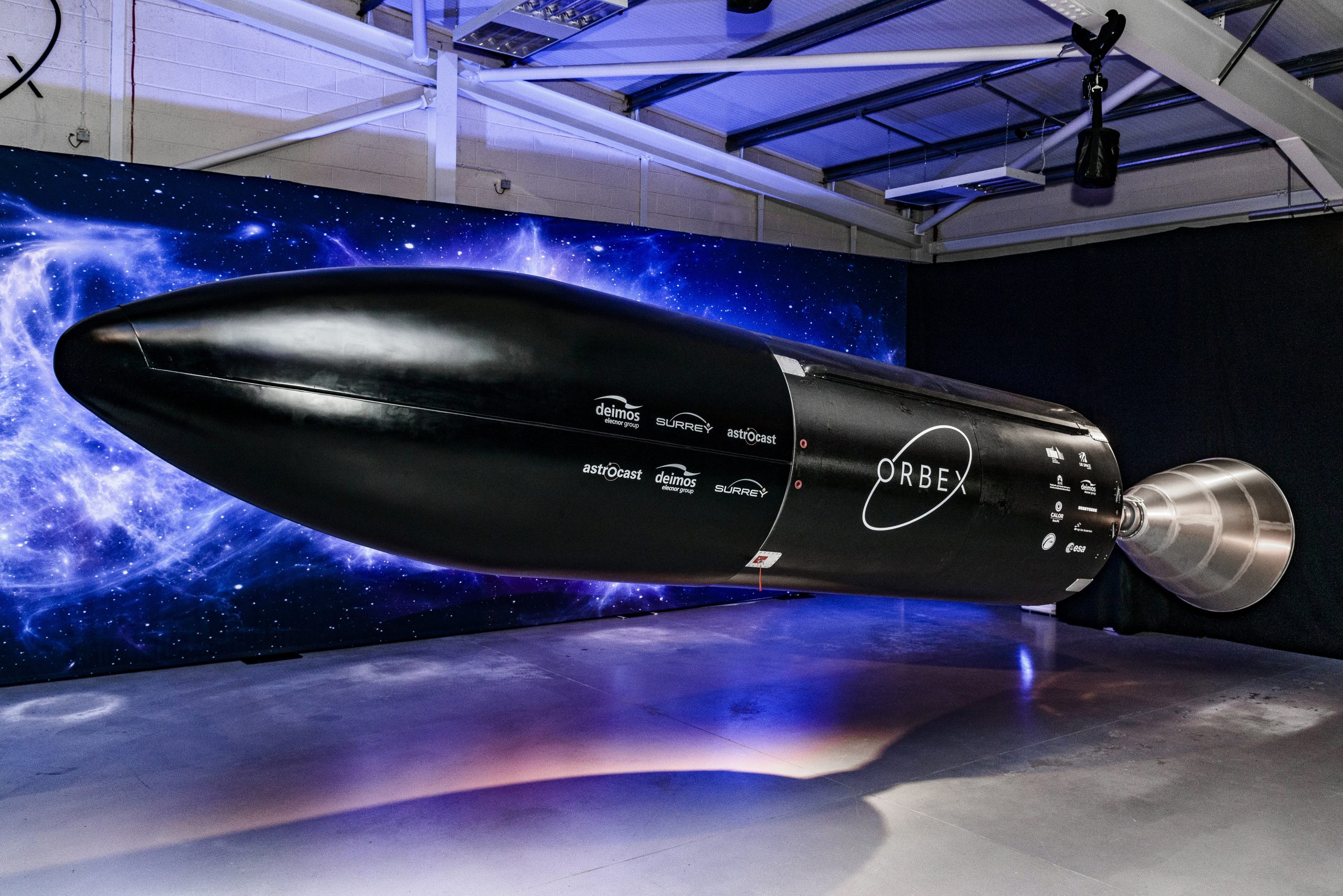Rocket engine manufacturer PANGEA Aerospace and additive manufacturing engineering firm AENIUM have entered into an industrial partnership to develop and industrialize 3D printed propulsion systems.
The systems will be based on NASA’s GRCop-42 copper alloy specifically engineered for rocket engines, and will be developed and commercialized for the European aerospace market.
The partners believe their agreement will ensure a breakthrough in the engineering of complex combustion devices while advancing the analysis of various advanced superalloys to meet demanding applications within the space sector.
“This alliance will propel the next generation of reusable rocket engines also bringing the opportunity to the EU market to improve their combustion devices with the most innovative material science and qualified industrial additive manufacturing,” said Miguel Ampudia, CIO of AENIUM.

Developing PANGEA’s aerospike engine
Conventional rocket engines tend to feature a bell nozzle that constricts expanding gases. Alternatively, a basic aerospike shape resembles that of a bell turned inside out and upside down. When the reconfigured bell is “unwrapped” and laid flat, it is termed a linear aerospike. This type of engine design has been explored by the likes of NASA for decades for its theoretical ability to offer more efficient thrust throughout a vehicles flight and therefore substantially improve performance.
Aerospike engines could potentially offer an efficiency increase of up to 15 percent compared to current rocket engines, boast reusability capabilities and could be manufactured rapidly and at very low-cost.
Despite multiple aerospike engines being developed in this time, none have ever flown due to engineering difficulties historically linked with the design regarding cooling and manufacturability. However, PANGEA claims to have taken steps towards solving these issues thanks to embracing additive manufacturing techniques and new materials such as GRCop-42.
The company is developing its DemoP1 liquid oxygen and methane aerospike engine demonstrator, The DemoP1, which is designed to characterize and validate several key enabling technologies for future aerospike developments. As part of its new agreement with AENIUM, the firm will demonstrate the use of methane as a fuel, its manufacturing methodology for the engine, and its dual regenerative cooling system.
PANGEA has already started the preliminary design of its larger, commercially ready aerospike engine and its subsystems that will benefit from the partnership with AENIUM.
A hot-fire test of the DemoP1 is planned to take place in the third quarter of 2021.

Bringing the “holy grail of propulsion” closer
One of the key breakthroughs, according to PANGEA, is NASA’s GRCop-42 material, which is a high conductivity, high-strength alloy designed for use in high-heat flux applications such as liquid rocket engines and other combustion devices. The 3D printable copper-chrome-niobium superalloy was specifically engineered by NASA to withstand the harsh environments of regeneratively-cooled combustion chambers and nozzles due to its oxidation resistance.
Harnessing the material properties of GRCop-42 via additive manufacturing has increased the possibility of building a functional and economically viable aerospike engine far quicker and at much lower cost than was previously possible, the company believes.
“AENIUM is the perfect partner to advance quicker into our roadmap, and we are very excited to sign an agreement with a cutting-edge additive manufacturing start-up like them,” said Adrià Argemi, CEO of PANGEA Aerospace. “The agreement with AENIUM goes beyond shared exclusive capabilities on GRCop-42 in Europe, a copper material specifically developed for rocket engines. AENIUM also brings unmatched expertise and R&D capability in processes and materials.
“GRCop-42 based alloys are one of the key solutions that allow us to solve the thermal challenges of an aerospike nozzle rocket engine. We are now ready to offer this unique capability to all the European aerospace sector.”
The companies will work together to develop and commercialize PANGEA’s DemoP1 aerospike propulsion system prior to the hot-test later this year. AENIUM will bring to the table its expertise in material science and additive manufacturing processes, while PANGEA will offer its expertise in propulsion system design.
The companies will combine 3D printing, complex post-processing, and GRCop-42 to further develop and commercialize propulsion systems to enable more start-ups in the sector to access them. The agreement also opens the door to a common service agreement between the two partners to deliver cutting-edge materials to Europe’s aerospace industry.

3D printed rocket engine advances
Competition is fierce within the private space sector to develop and launch the next generation of launch vehicles, satellites, and rocket engines. This year alone has already seen multiple advances from companies and start-ups active in this field who have harnessed 3D printing technologies for the design and production of their products.
In February, British aerospace firm Orbex tasked EOS Group company AMCM to build the largest industrial 3D printer in Europe capable of rapidly printing rocket engines in-house.as it gears up to launch its Prime launch vehicle in 2022. A month later, California-based aerospace firm Rocket Lab announced its plans to go public for a valuation of $4.1 billion, and also unveiled its next-generation reusable 3D printed rocket, Neutron.
Meanwhile, propulsion system manufacturer Aerojet Rockdyne’s RL10 rocket engine has successfully passed NASA hot-fire tests, rocket manufacturer Relativity Space has raised a further $650 million to ramp of the production of its new 3D printed Terran R rocket, and private aerospace firm Launcher has teamed up with VELO3D and Ansys to optimixe the design of a performance critical component within its E-2 rocket engine.
Most recently, aerospace propulsion system developer Agile Space Industries acquired 3D printing service bureau Tronix3D to optimize the performance of its propulsion systems used to power NASA and SpaceX’s upcoming lunar missions.
Subscribe to the 3D Printing Industry newsletter for the latest news in additive manufacturing. You can also stay connected by following us on Twitter and liking us on Facebook.
Looking for a career in additive manufacturing? Visit 3D Printing Jobs for a selection of roles in the industry.
Subscribe to our YouTube channel for the latest 3D printing video shorts, reviews and webinar replays.
Featured image shows the agreement seeks to provide a breakthrough in the engineering of complex combustion devices such as aerospikes. Photo via AENIUM.


